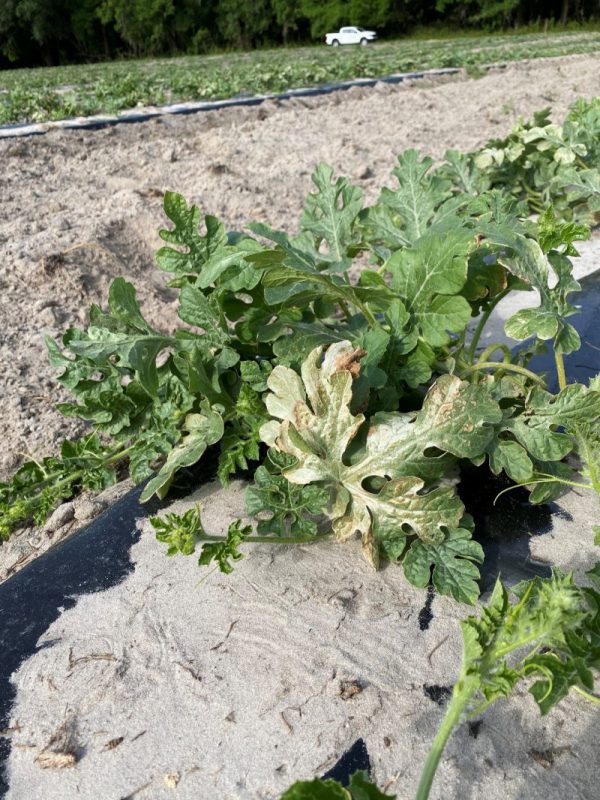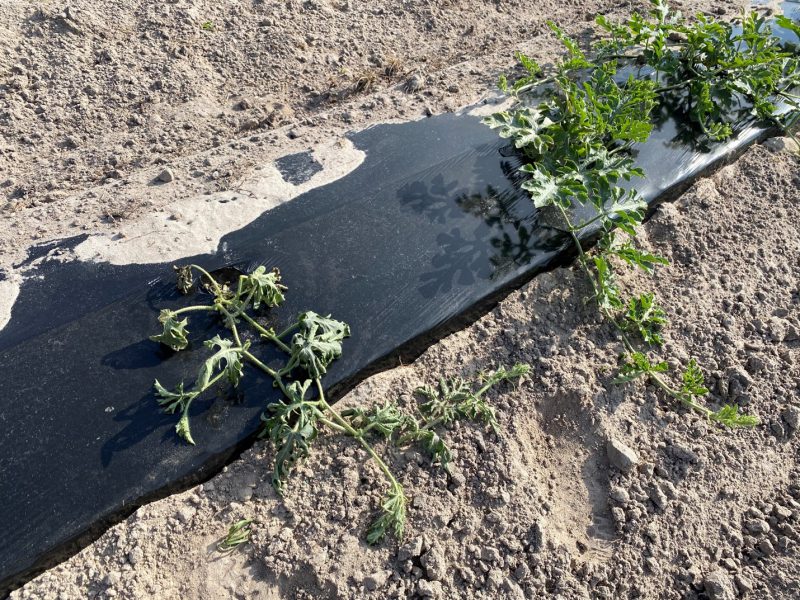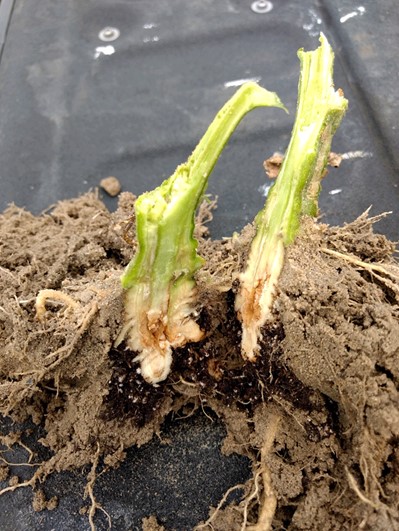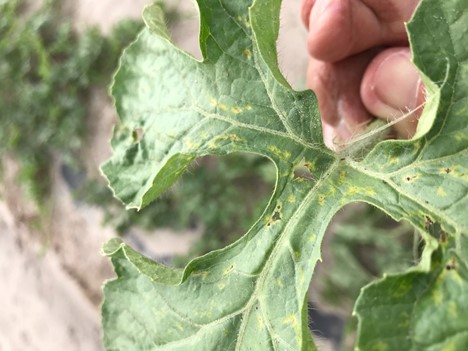UF/IFAS Extension Suwannee Valley Weekly Watermelon Crop Update – summarized by Bob Hochmuth with input from Suwannee Valley Extension Agents: Mark Warren, Tyler Pittman, Tatiana Sanchez, Luke Harlow, Jay Capasso, Sylvia Wills, Dan Fenneman, Keith Wynn, Danielle Sprague, Kevin Athearn, and Charles Barrett.
–
General Crop Update
The most common comment from this past week went something like this,….. “I am seeing a lot more damage from the frost than I thought I had in certain fields”. I would agree with this assessment, although we were expecting to see more frost symptoms, as the damaged tissue began to dry a few days after the frost event. I would also suggest we get used to this, because those crown area leaves that were damaged are going to be there all season and look rough. Just be aware the rough looking leaves will be with this crop all season. The main thing to keep an eye on is any sudden progression or change in the leaves near the damaged crown leaves. The crop has rebounded quickly in most fields, as we had a well-established root system from which growth could push, and we had beautiful weather for at least 6 days after the frost. Along with the frost damage we are also seeing quite a bit of wind and sandblasting damage from just before and just after the frost event. This damage will look similar to the frost damage, but has more of a bronze/glazed look to the leaves (Figure 1). Bob Hochmuth and Tatiana Sanchez
–
Disease Update
We are at that point in the season where the first signs of Fusarium wilt are starting to show up here and there. As the crop starts to set fruit, the increasing water demand on the plant results in the onset of the most typical symptom, wilt. Affected plants or runners, will have a dull green color and may recover during the cooler hours of the day. Eventually, the plant (or runner) succumbs to the disease as the vascular system clogs up (Figure 2). You can test the presence of Fusarium by cutting through the crown area of a symptomatic plant, where you will observe discoloration of the vascular system, as healthy tissue is white (Figure3). For this disease, there are no efficacious chemical control options at this stage of the crop. Tatiana Sanchez
–
–
Insect update
We are seeing evidence of thrips feeding on watermelon leaves throughout the region. The warm weather last week brought on the activity of adult thrips. You may have even noticed them biting/scratching you causing a pesky itching, resulting from feeding on your arms and other exposed areas. The feeding symptoms on the plants are small random scratched areas on upper leaf surface (Figure 4). Thrips pose little economic concern in watermelons, so don’t be alarmed if you see this feeding damage.
Squash bug adults continue to be active and have posed a threat in certain fields. Scout the field perimeters, as this is where they move into the fields first. If only the perimeters have squash bugs, spray only the perimeters so you minimize killing beneficials throughout the field. Bob Hochmuth and Mark Warren
–
Petiole sap testing service
Reminder: The Suwannee Valley Extension Agents are all equipped to run watermelon petiole sap tests for farmers. We can test for nitrogen and potassium only. The most recently matured leaf petioles are the ones we sample. This it typically the 5th or 6th leaf back from the tip and we need at least a dozen leaf petioles from random areas of a field. Communicate with your agents to get lined up for this service. Bob Hochmuth
–
Thank You to the Suwannee Valley Rapid Diagnostic Watermelon Program and Its Industry Sponsors: UF/IFAS Extension agents have initiated a more formal way to support our watermelon growers with a rapid diagnostics system through Suwannee Valley Regional. This industry-funded program allows Extension Agents to submit and pay for watermelon grower plant disease and other diagnostic samples. This SV Rapid Diagnostic Watermelon Program will help us to get quicker diagnostic results and not have to charge the growers directly. Plant disease samples are typically $40 and leaf tissue analyses are typically $20. We want to thank the initial sponsors of this program: Syngenta Crop Protection, Harrell’s Fertilizer, Koppert Biological Systems, SEEDWAY LLC, BASF Vegetable Seeds, Bayer Crop Science, and Gowan Seed for sponsoring this effort. Other industry reps interested in sponsoring this effort can contact Bob Hochmuth at bobhoch@ufl.edu or 386-288-6301.
- 2024 Watermelon Season Wrap Up - June 21, 2024
- Weekly Watermelon Update – June 3 - June 7, 2024
- Weekly Watermelon Update #10 – May 20 - May 24, 2024




